
Facts About Hummingbirds (Trochilidae) are abundant in South America, the misty slopes of the Andes Mountains and enchanting swathes of Amazon Rainforest abuzz with some 140 different hummingbirds species. These nectar-loving Neotropical birds barely rest to let avid birdwatchers catch a glimpse, but they still manage to bewitch onlookers with their fluttering and fleeting presence, a blur of brilliant colors, bravado and aerial agility.
From the White-booted racket-tail (Ocreatus underwoodii) with its Ugg-like booties to the Marvelous spatuletail (Loddigesia mirabilis) with its remarkable tail reminiscent of a game of table tennis with violet-blue ping-pong paddles, the incredible biodiversity and bedazzling beauty of hummingbirds really is something to behold. For something so small, there is certainly an incredible amount of interesting facts about them. Here is a list of our favorite, fun and fascinating facts about hummingbirds.

They are known as hummingbirds, not because of their ability to give tuneful renditions of songs while keeping their lips closed (although, I like to think it is), but because of the humming sound created by their beating wings, which flap at high frequencies audible to humans.
They flap their wings typically around 70 times per second, allowing them to fly at a speed of around 30 mph (almost 50 kph), but they have been known to flap them as high as 200 times per second when performing a courtship dive at speeds up to 60 mph (almost 100 kph). Blurringly fast to human eyes! These nose dives subject them to over 10Gs of force – enough to cause fighter pilots to blackout!
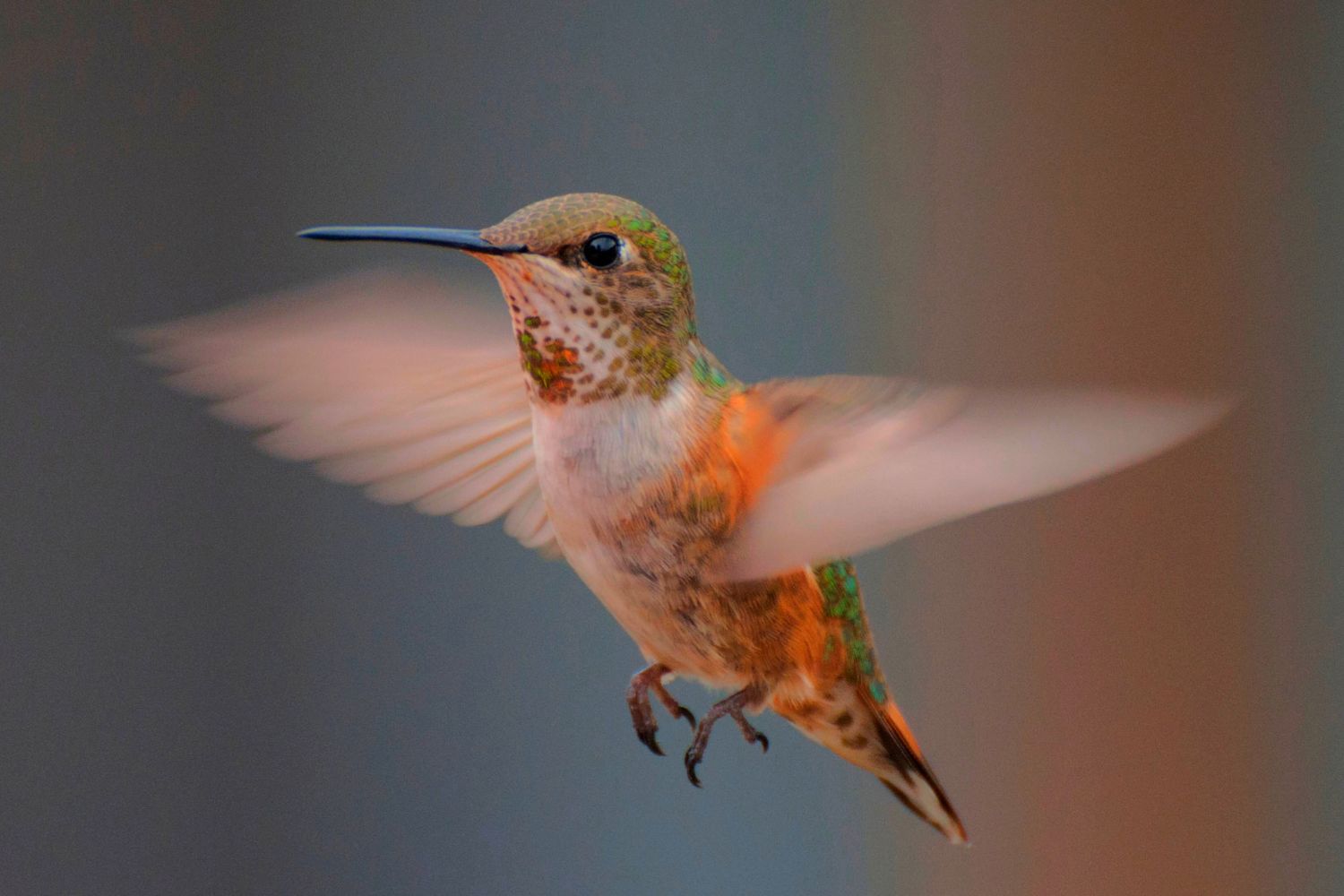
And it’s not just the high speeds that are impressive. Hummingbirds are the only birds in the world that can fly both forwards and backward. They can also hover mid-air, fly sideways, and even upside down. Moves any Apache helicopter pilot would be proud of! Their agility is down to a combination of their small size and some unique physiological adaptations. They have evolved smaller feet to reduce aerodynamic drag when flying, but this comes at a cost – their feet are so weak they can’t walk or hop, just perch or slightly scoot sidewards.
They additionally have several weight-reducing features. Most of their bones are porous, and some even hollow, in the case of their legs and wings. They also have fewer muscles and ligaments (instead they have fused bones in their backs and pelvis to maintain support). Some would call this extreme, but to reduce weight further they have removed some non-essential organs, including the bladder, gall bladder, a right ovary in the females, and the penis in the males.
To do all that flapping they have evolved an enlarged heart for greater pumping and huge pecs that even Arnold Schwarzenegger would be proud of. They take up 25 percent of its entire body weight, a higher percentage than any other bird species.
More amazing are the bones in their wings. Unlike other birds whose wings have several moveable joints, a hummingbird’s are permanently fixed and rigid, except at the ball-and-socket shoulder joint (imagine having straight arms and not being able to move your elbows or wrists), allowing greater control of the wing, extra stability in flight, and the ability to pivot them up to 180 degrees.
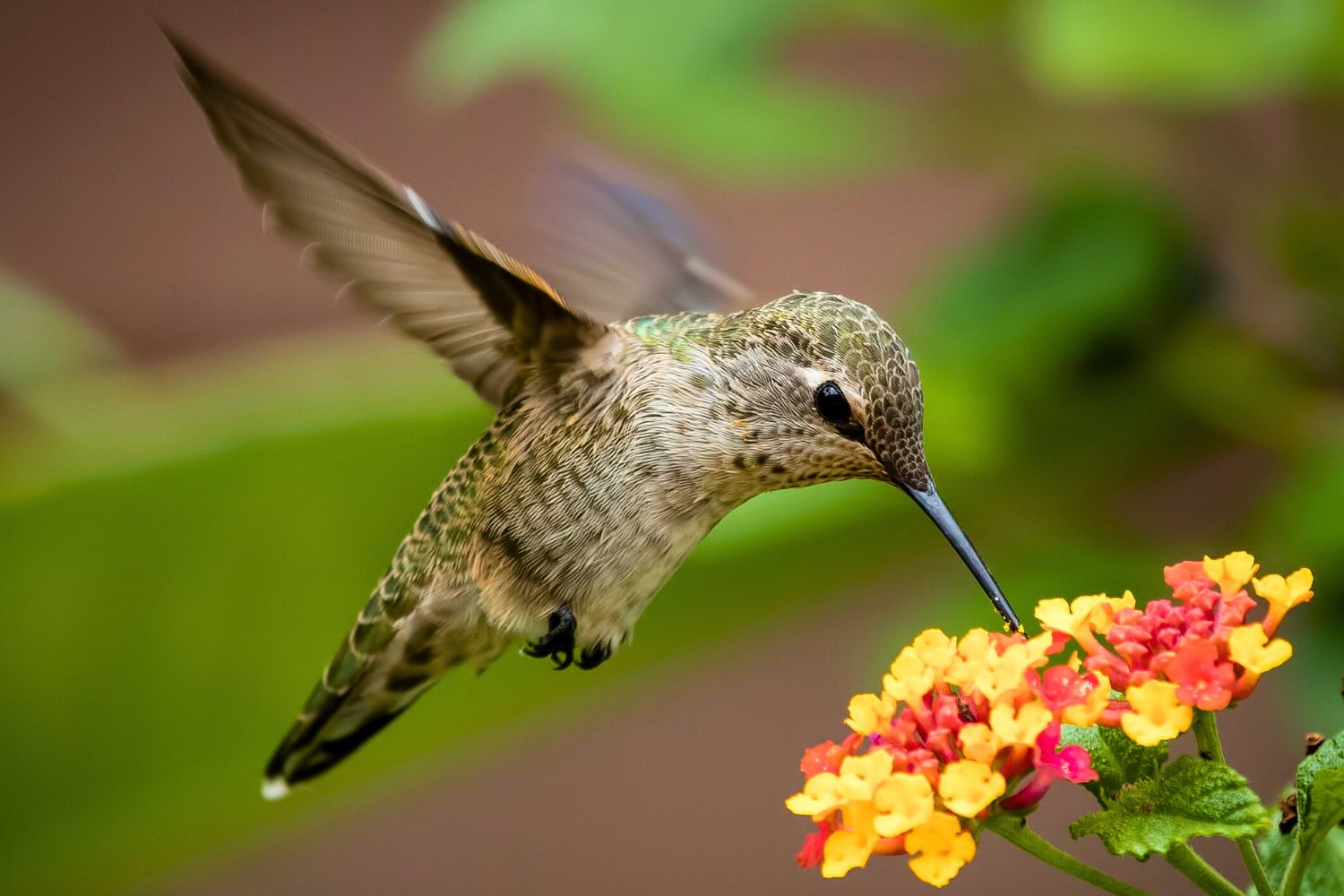
Hummingbirds are all part of the bird family Trochilidae from the Greektrochilos, meaning “small bird”. On average, they are only 8.5 centimeters long from beak to tail.
The smallest hummingbird, and indeed the smallest bird in the world, is the Bee Hummingbird at 5cm in length, so named because it is scarcely bigger than a bee. The largest hummingbird is the Giant Hummingbird at 21.5cm in length. The Vervain Hummingbird lays claim to the world’s smallest bird egg, just 1cm long and weighing a mere 0.3g.
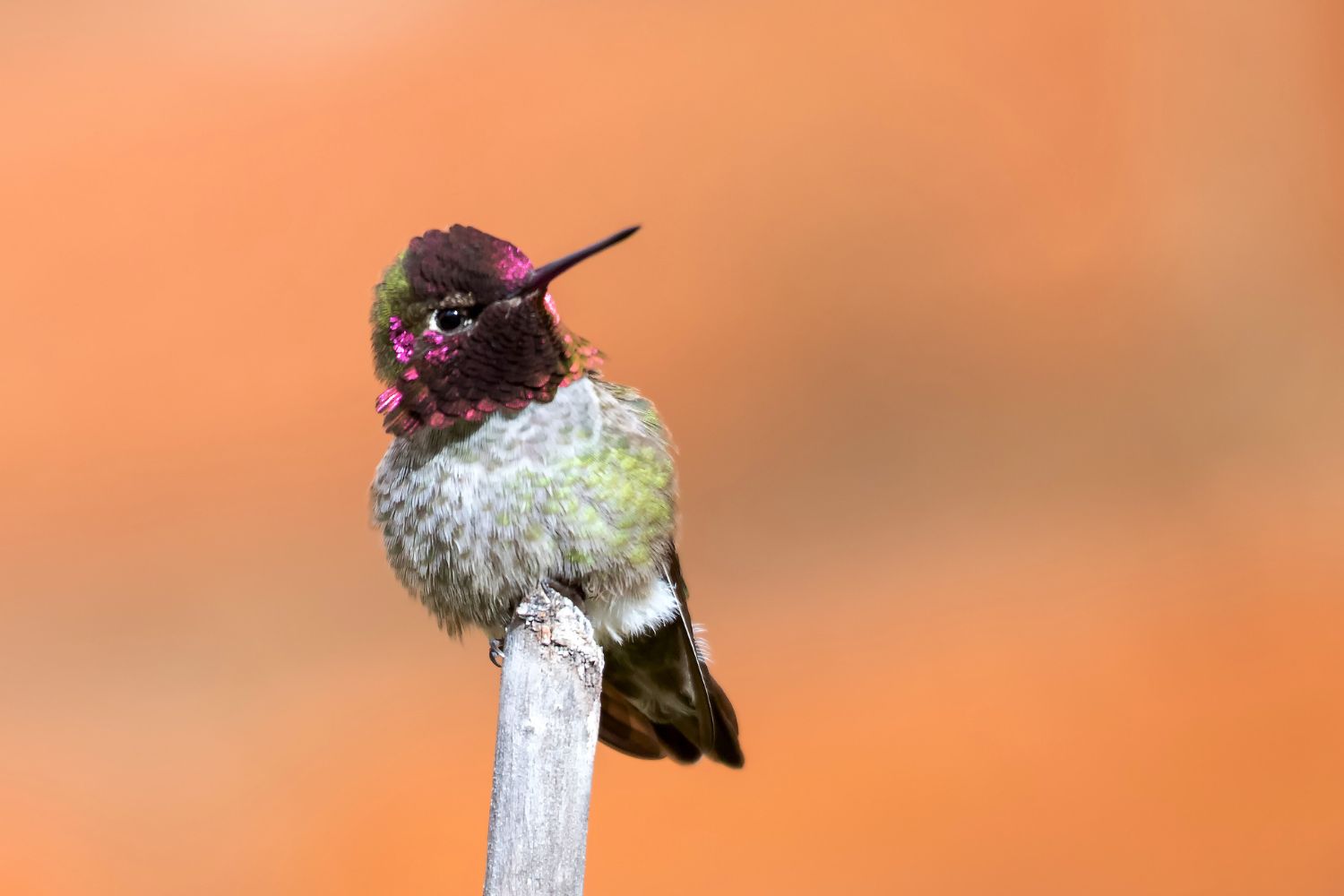
Despite being so small, collectively they are huge (not in a Transformer kind of way) being the second largest family of birds, containing some 350 species (there are over 400 species of tyrant flycatcher).
They are only found naturally in the Americas, from as far north as Alaska and as far south as Chile, all the way from coastal, sea-level habitats up to astonishing elevations of 5000m in the Andes Mountains (thanks to some some handy hemoglobin evolutionary enhancements which help them survive in low oxygen environments). Most species are found in South America, with more than 60% of the world’s hummingbird species found in the countries of Ecuador (132 species) and Brazil (81 species) combined. It is now believed there is even a population of hummingbirds on the Indonesian island of Bali after human introduction.
Most hummingbird species do not migrate, but some do, and not on the back of geese as some myths say. The Rufous Hummingbird, for example, migrates a staggering 3,000 miles from its nesting grounds in Alaska and Canada to Mexico for its holidays in the spring, and then back again in the fall. The Ruby-Throated Hummingbird flies 500 miles nonstop across the Gulf of Mexico for its migration, taking them around 20 hours. Huge feats for such tiny birds!
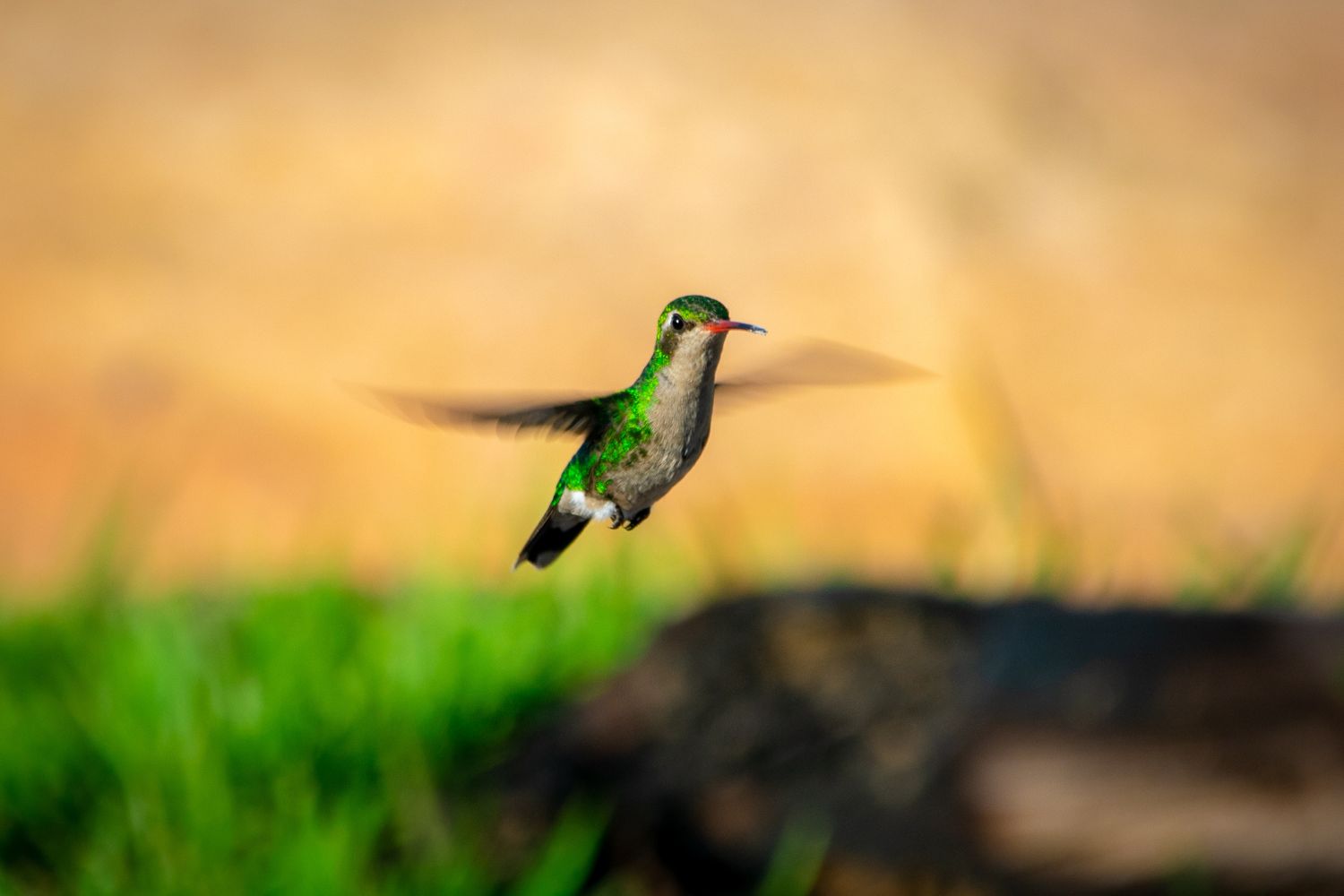
As you might guess from their Spanish and Portuguese nicknames of Beijaflor (“Flower-Kisser”) and Pica/Chupaflor (“Flower-Knibbler/Sucker”), they are predominantly nectarivorous, meaning they eat the sugar-rich nectar produced by flowering plants, but they do eat small soft bugs and spiders for protein.
To help get at the nectar, they have developed some incredible physical adaptions. Firstly hummingbirds have longer beaks in proportion to their body than other birds.
Not only are they longer, but the top beak overlaps the edges of the bottom beak, allowing the hummingbird’s tongue to dip in and out easily when ajar. Some species have particularly unusual bill shapes because they have co-evolved with a small number of flower species whose flowers are of a particular shape. For example, the Sword-billed Hummingbird (above) is the only bird in the world whose beak is longer than its body, reaching up to 5 inches long and being so heavy that the birds tend to perch holding their bills straight up!
Secondly, they have long, highly specialized tongues, up to one and a half times the length of the bill in some species, that they store wrapped around their skull. Thanks to slow-motion video and some clever scientists, we now know their tongues are fluid traps and don’t use capillary action (the phenomenon by which liquid flows up thin tubes through surface tension alone) as previously thought.
The hummingbird has a forked tongue which is lined with hair-like extensions called lamellae. When inside the flower, the tongue separates, forking out and the lamellae extend outward. As the bird pulls its tongue in, the tips come together as the lamellae curl inward, trapping the nectar within the tongue. In this way, they can lap up the nectar at a rate of up to 20 licks per second! However, how they swallow the nectar is still a mystery.

A hummingbird’s brain is 4.2% of its body weight, the largest proportion in the bird kingdom. As you might expect, with this comparatively huge brain, hummingbirds are extremely smart and they can remember every flower they have been to, and how long it will take a flower to refill. A handy skill when you visit on average 1,000 flowers in a day! Not your average bird-brain after all!
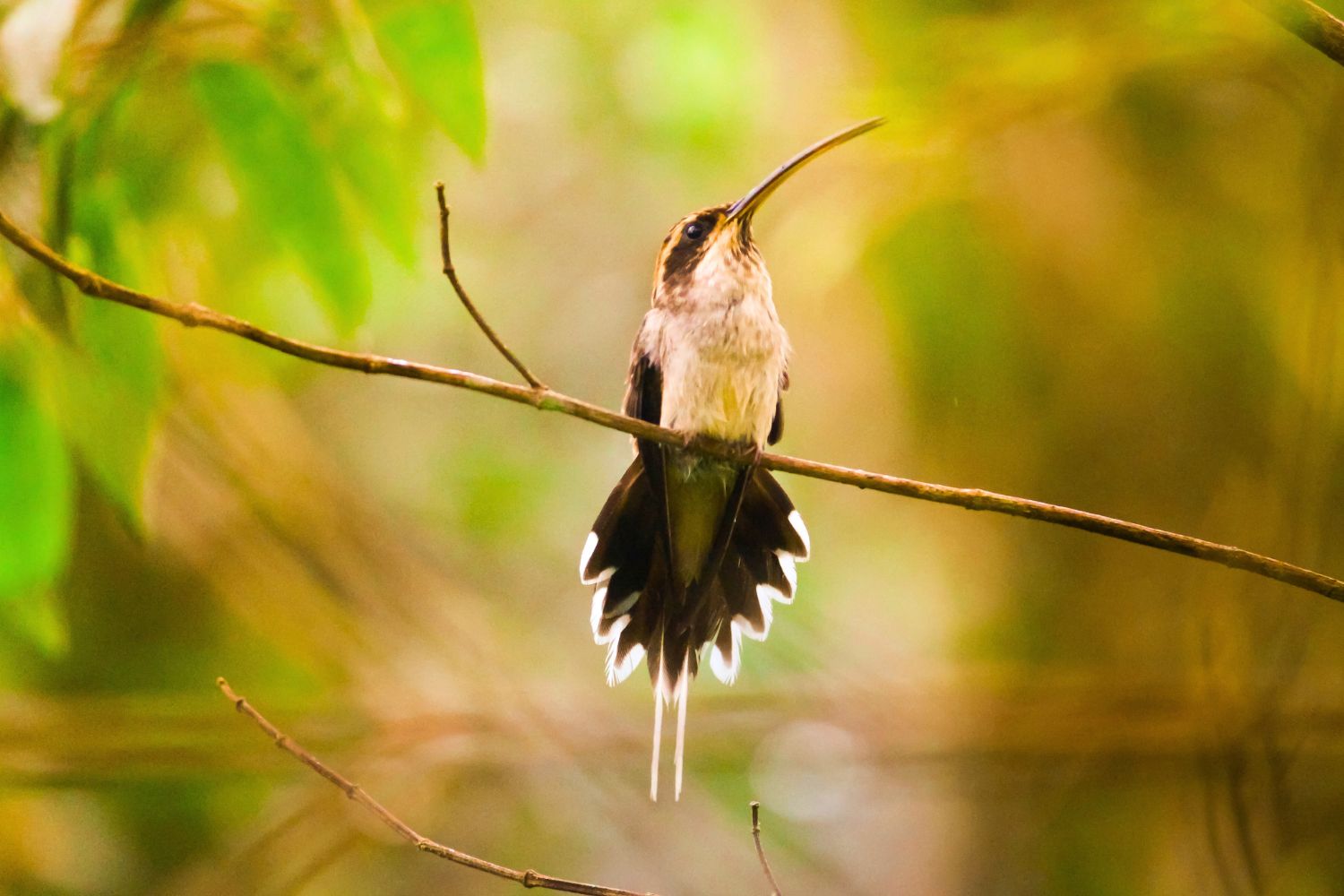
Talking of body weight, hummingbirds can eat up to 8 times theirs in a day but typically consume twice their weight in nectar daily. That’s approximately half their weight in pure sugar! And yet they only weigh between 2 and 20 grams (a penny only weighs 2.5 grams, a nickel 4.5 grams).
Why don’t they get fat? Well, as you’d imagine, all that hovering can take it out of you. In order to support the rapid beating of their wings, a hummingbird in flight has (with the exception of insects) the highest metabolism of all animals, roughly 100 times more than an elephant’s!
Even at rest, they will take around 250 breaths a minute, their heartbeat reaching up to 600 bpm, but this can reach a staggering 1,260 beats per minute in flight. So high is their metabolism in fact that, rather than getting fat, they are continuously hours away from starving to death – some can lose up to 15 percent of their body weight overnight – and are able to store just enough energy to survive the night.
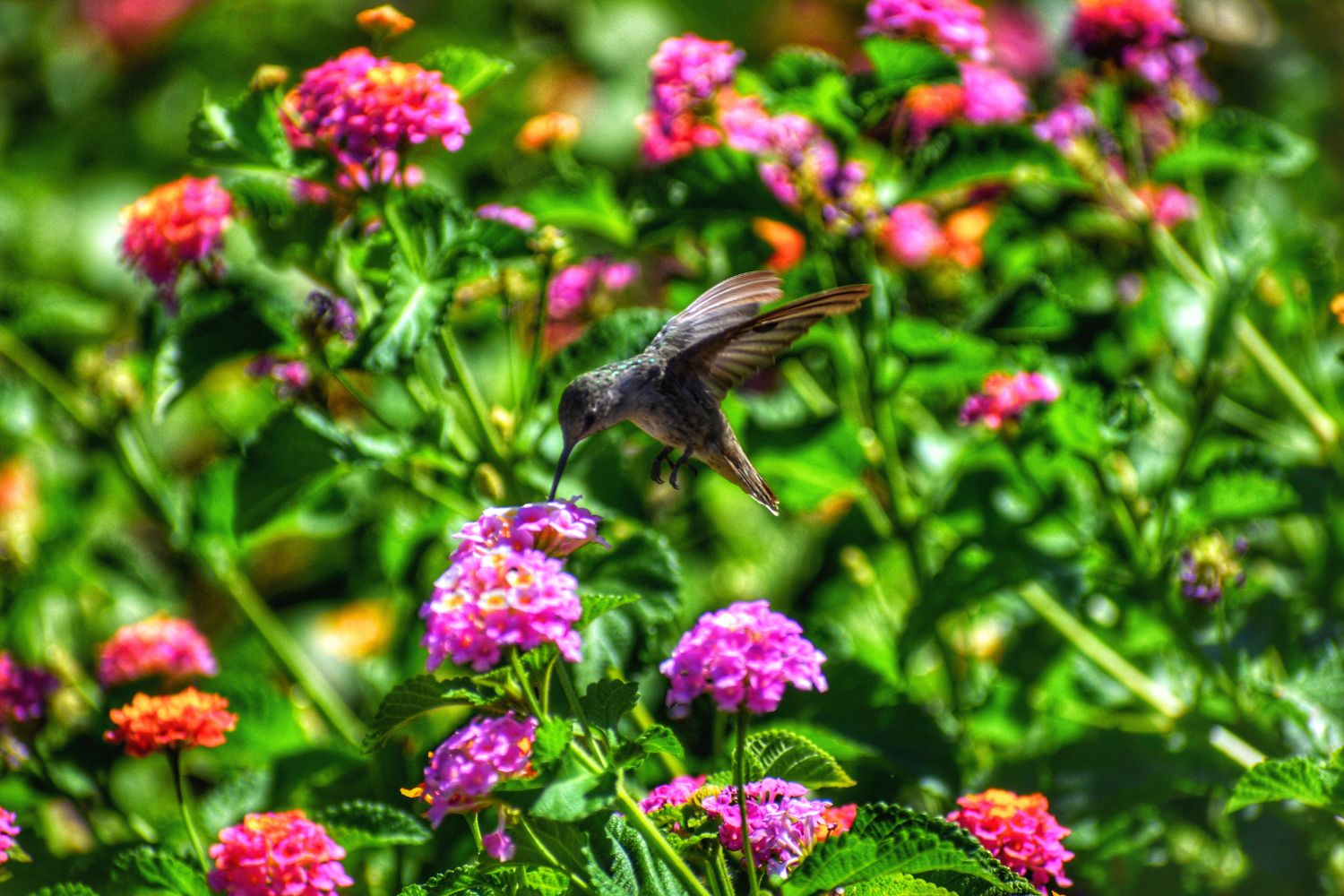
Some male hummingbirds have brilliantly colored, iridescent throat feathers whose purpose is two-fold. Obviously, the ladies love them, but they are also used to scare males or even other bird species (including hawks!) who encroach on their territory, something they do quite often, being surprisingly one of the most aggressive bird species out there (they also perform dramatic aerial moves to frighten others, and according to Sheri Williamson, a naturalist at the Southeastern Arizona Bird Observatory, they use some colorful language too, believing the hummingbird vocabulary to be “a hundred percent swear words”).
Feather colors can vary widely from simple browns to brilliant reds, blues, greens, and purples. In some species, the coloring comes from the pigmentation of the feathers, but in many, the coloring instead comes from light-reflecting prism-like cells within the top layers of their feathers, so by merely shifting position a seemingly dull-looking bird will suddenly become fiery red or vivid green. Our favorite is the Fiery-throated Hummingbird.
Some have developed nice accessories to woo the ladies. The Sparkling Violetear has some rather fantastic ear-tufts. Booted Rackettails not only have some of the craziest tails in the avian world, but they also come complete with cotton-wool balls for feet! Plaudits, however, have to go to the Marvelous Spatuletail, the rarest of all hummingbirds. Found only in the forest edges of a remote valley in the Río Utcubamba region of northern Peru, and unique among birds in having just four tail feathers, their two outer tail feathers are quite incredible. Elongated and ending in violet-blue discs or “spatules”, these feathers can be moved independently and are frantically waved by the male as he hovers in front of the female during his show.
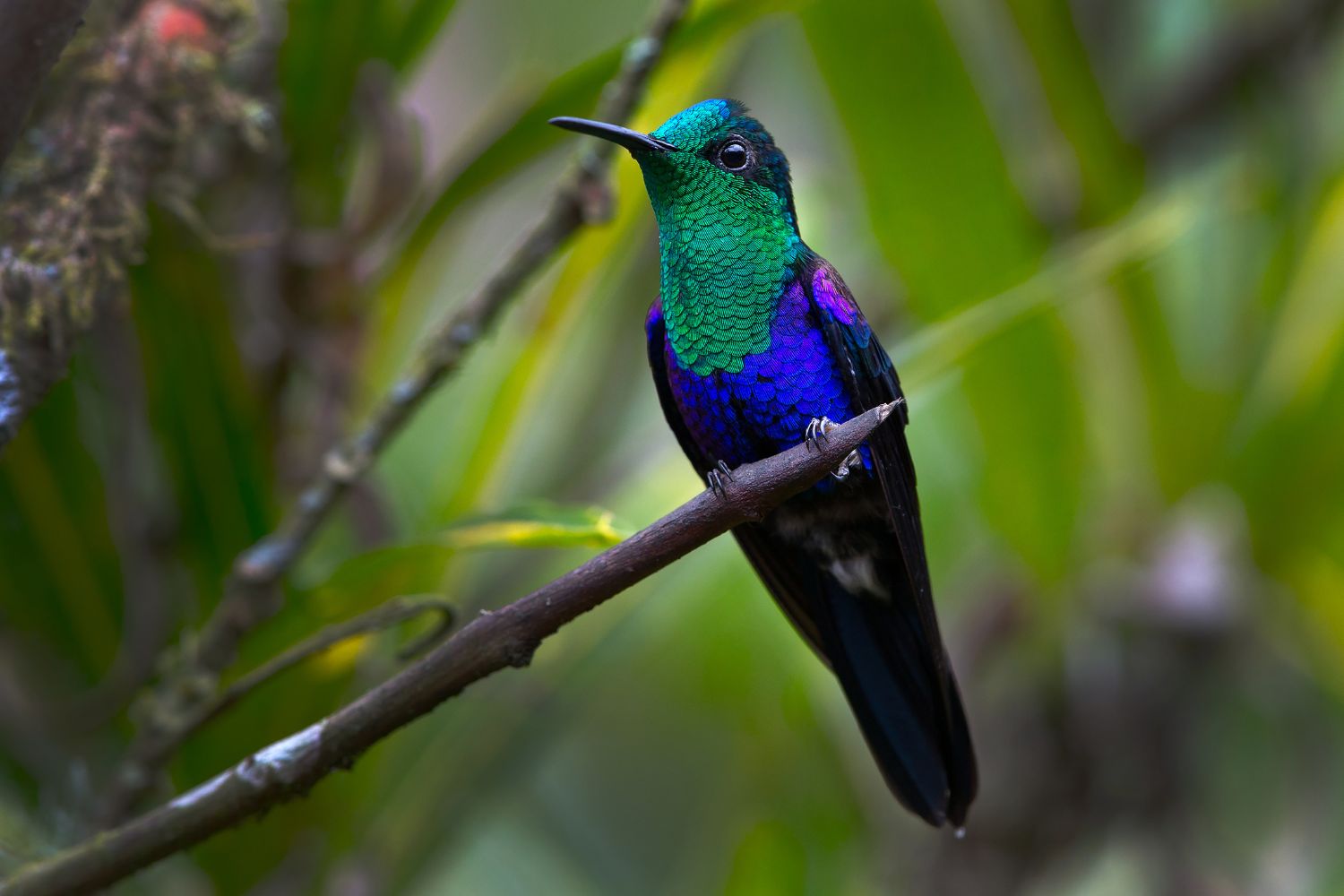
Incredibly, scientists have figured out a hummingbird’s favorite color is red. Some flowers rely on hummingbirds for pollination (the pollen is transferred via their beak and head). Flowers pollinated by butterflies and other insects lure them in with sweet fragrances, but this tactic won’t work with hummingbirds as, like most birds, they have no sense of smell (they lack olfactory nerve endings in their nasal cavities). Instead, these flowers have to advertise themselves with color alone, red being the most vibrant, especially in contrast to surrounding green foliage. As such, hummingbirds have been known to investigate red shoes, red children’s toys, and even red lipstick! It is also the reason why hummingbird feeders are predominantly red.
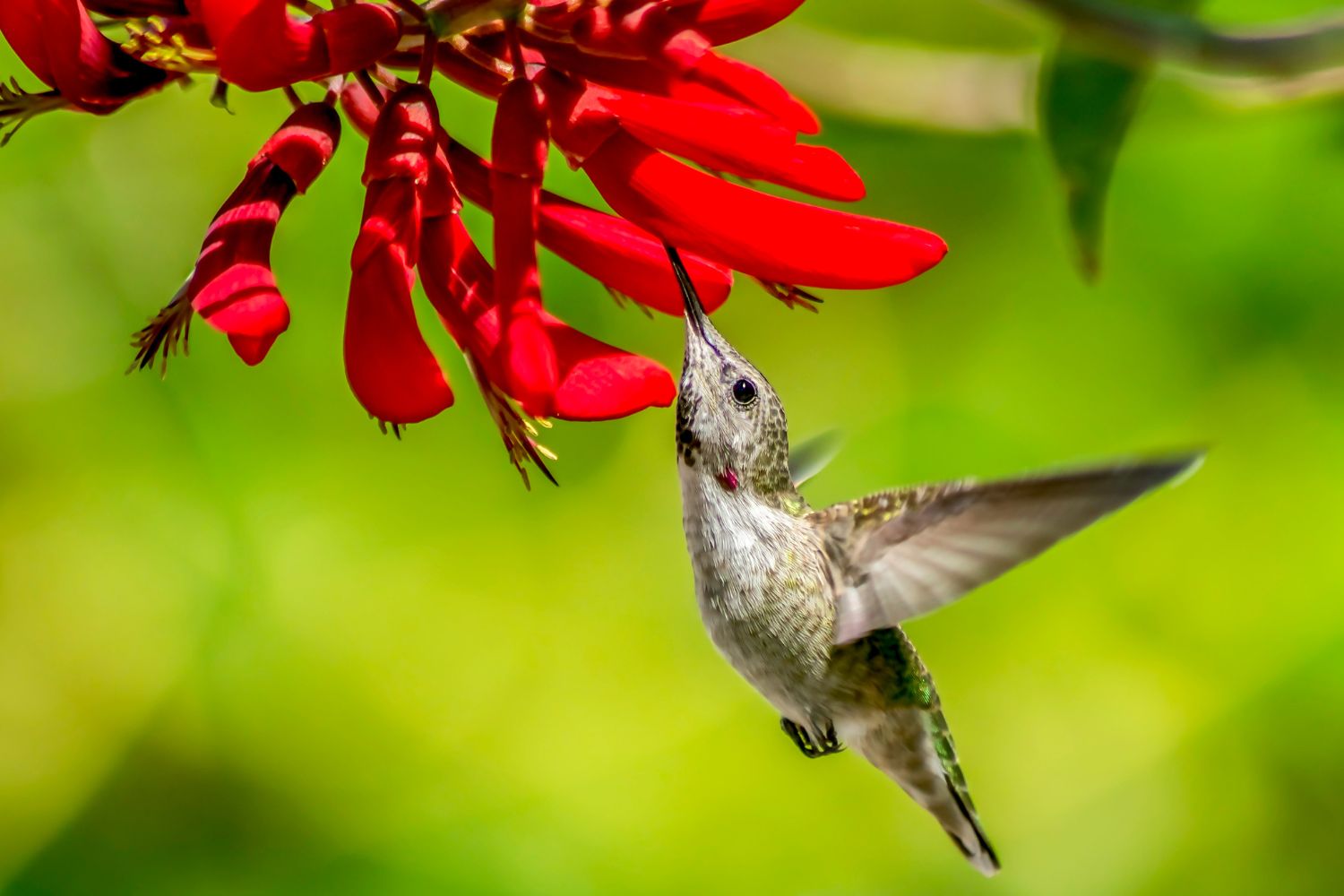
When hummingbirds sleep at night, they go into a hibernation-like state called torpor to conserve energy, when their heart rate can drop to as few as 50 bpm, and their body temperature as low as 38 °F (just over 3 °C). In this state, hummingbirds may well appear as if dead, and indeed have been known to be found hanging upside-down! As you’d expect, waking up from a good nap takes you a while to come round, and it’s no different for a hummingbird, taking them up to an hour to come to.


Explore the Manu Amazon Rainforest & Inca Trail hike to Machu Picchu, you will enjoy the best adventures in Peru, exploring amazing inca trail routes and the best amazon wildlife with our local tour guides, in small groups.
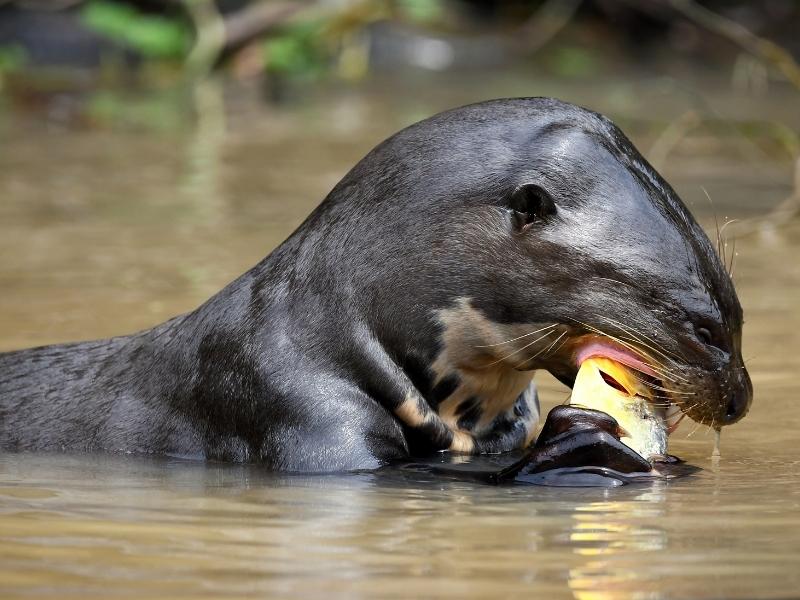
Discover the majestic Amazon rainforest of the Manu National Park. This protected area is in Peru, it is one of the largest ecosystems on the planet, due to its great diversity of birds, insects, plants and mammals.


Manu National Park is an excellent way to experience an intense amazon wildlife.Is the biggest Amazon rainforest in the Americas, its incomparable natural wealth, host the greatest amount of flora and fauna of the world.
